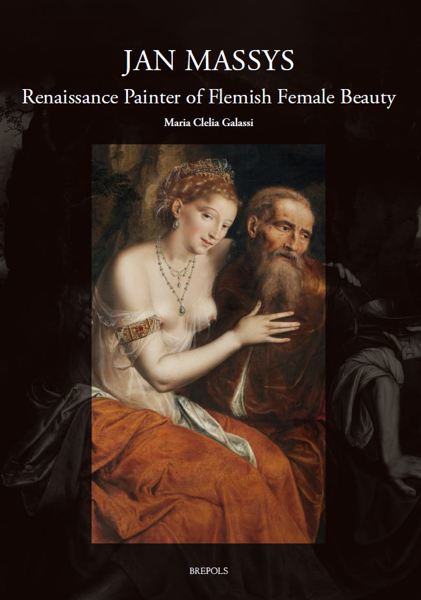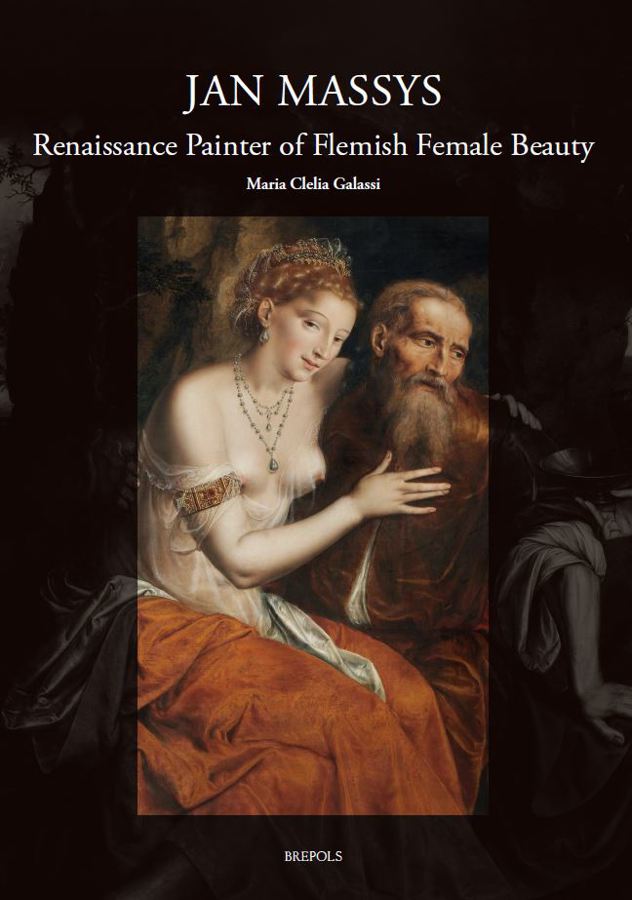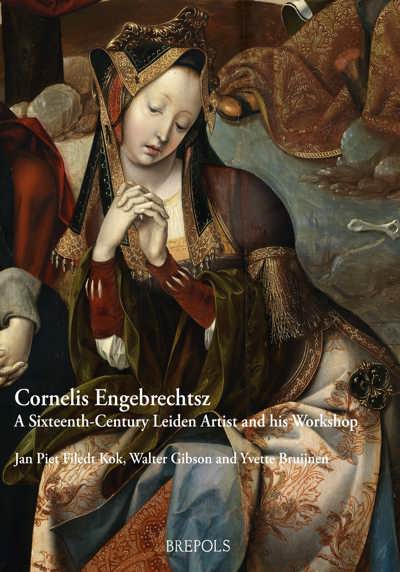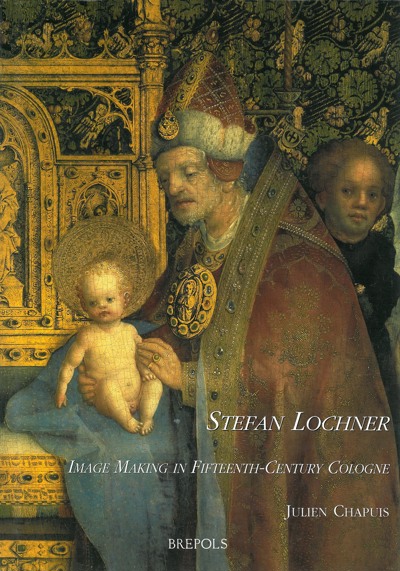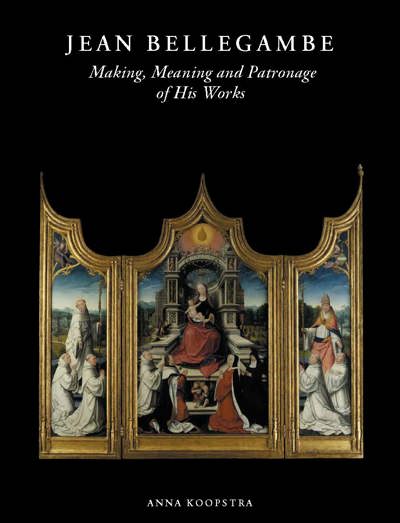
- Pages: 244 p.
- Size:210 x 297 mm
- Illustrations:82 b/w, 223 col., 2 tables b/w., 1 tables col.
- Language(s):English
- Publication Year:2024
- € 150,00 EXCL. VAT RETAIL PRICE
- ISBN: 978-2-503-60720-7
- Hardback
- Available
This book rediscovers the Antwerp painter Jan Massys (c.1510-1573) and his artistic milieu.
“As expected in the Me Fecit series of which this volume is a part, attention to painting technique and laboratory examinations figures prominently.” (Larry Silver, in Historians of Netherlandish Art Reviews, May 2024)
Maria Clelia Galassi graduated in art history at the University of Genoa and obtained her PhD from the University of Milan. Since 2000 she is professor at the University of Genoa, where she teaches History of collecting and Technical Art History. She focused her researches on Flemish and Italian painting technique during the Early Modern Age, and in the artistic relationship between Genoa and the Netherlands in the 15th and 16th centuries.
The painter Jan Massys (c. 1510-1573) trained under his father Quinten, succeeding him after his death (1530) at the head of Antwerp's most famous workshop. However, his career, destined for certain success, was abruptly cut short in 1544. Condemned for joining the Loysts sect, he had to flee Antwerp, finding refuge perhaps initially in France and at one point in Italy. Only in 1555 was he able to return to his homeland, regaining his artistic leadership within a few years. His oeuvre consists exclusively of works for private use and is characterized, in particular, by the depiction of elegant and seductive nude or half-naked female figures, protagonists of biblical or mythological subjects. The identification of the patron of the 1561 Venus with the view of Genoa (Stockholm, Nationalmuseum) in the person of the noble Genoese banker Ambrogio di Negro, offered the possibility of reconstructing the social context of the artist's clientele and his relations with those intellectuals – both Genoese and Flemish-who gave life to the lively humanist academies of Antwerp. The figure emerges of a cultivated and particularly refined painter, who shared with his patrons the ideals of neo-Petrarchan poetry and executed paintings of great preciousness, characterized by a meticulous and skillful painting technique.
CHAPTER 1 ‘Joannes Massiis alias Quintens’: Follower of a Great Artistic Legacy
1. Jan, his father Quinten’s collaborator and emulator
2. The beginnings under paternal tutoring
2.1 The Prado Diptych, an unsolvable case?
2.2 The Saint Mary Magdalene of Antwerp: a proposal
3. Developing the prototype of Quinten Massys’s Butter Madonna
4. The beginnings as Quinten’s follower: the first secular subjects
5. Conclusions
CHAPTER 2 A Career of ups and downs
1. Jan’s ascertained biography through documents and dated paintings
2. Reconstructing a background: the years of a successful debut
2.1 The first Madonnas
2.2 The New York Rest on the Flight into Egypt
2.3 Secularizing religious themes: the Phoebus Susanna and the Elders
3. The exile
3.1 Where did he go?
3.2 The two paintings produced in exile
4. Back to a profoundly transformed Antwerp
4.1 Religious subjects for Catholic and reformed clientele
4.2 Genre scenes
CHAPTER 3 Jan Massys and Female Beauty
1. ‘Une volupté que le maîtres flamands n’avaient point obtenue ou cherchée jusqu’alors’: characteristics of the Massys’s brand
1.1 Changing aesthetic canons: Jan’s answer to Antwerp Romanists
2. The Venus of Cythera with the Views of Genoa: a clue about Jan Massys’s patrons
3. Was it Jan van der Noot who inspired, or commissioned, the Flora a with the view of Antwerp?
4. ‘Ut pictura thaetrum’: Jan Massys’s tableax vivants-like paintings for an elite audience.
A hypothesis that requires further investigation
5. A special Merry Company
CHAPTER 4 A Varied Painting Technique for Beauty, Lechery, and Luxury
1. ‘Pale, fishy, coldish color’ for enameled female nudes: a possible reason for Van Mander’s disregard
2. The colors of beauty: nature and cosmetics in Massys’s female flesh-tones.
3. Seeking contrast: graphic treatments to depict old male flesh tones
4. Brushwork texture, wet-on-wet colours and abbozzo to create luxurious, ‘sensual clothes’
CHAPTER 5 Inside Jan Massys’s Workshop: Variable Practices and Resulting Differences
1. Wooden supports
2. Design procedures
3. Painting materials
3.1 Seeking the lost blue
4. Working outside and inside the Antwerp workshop: the Genoa Madonna vs. the Genoa Caritas
5. The production of replicas in the workshop
5.1 The case of the Ill-matched lovers
5.2 Painting for the market: replicas on copper and canvas
CHAPTER 6 Inside Jan Massys’s Workshop: Known and Unknown Assistants
1. Documented assistants
1.1 Searching for unidentified authors: the Rouen and Madrid St. Jerome in his Study
2. Quinten II inside and outside his father’s workshop
2.1 Landscape specialists
2.2 Cityscape specialists: the views of Antwerp and Genoa
2.3 The 1572 Meeting between Elijah and Elisha. A possible attribution
CHAPTER 7 Conclusion
1. Epilogue: Jan’s farewell in two paintings
APPENDIX 1 Notes and Preliminary Consideration About Fashion in Jan Massys’s Paintings (by Alessio Palmieri-Marinoni)
1. Introduction
2. Clothing and Textiles in Massys’s Painting Before the Exile
3. The Great Theater of the World
4. Genoa. Eventually, Genoa.
APPENDIX 2 A non-invasive XRF study of Jan Massys’s paintings in Genoa (by Michele Brancucci)
Foreword
1. XRF spectrometry
2. Method of analysis and instrumental characteristics
3. XRF analysis of Jan Massys’s Madonna and Child. Results and conclusions
4. XRF analyses of Jan Massys’s Caritas. Results and conclusions.
APPENDIX 3 Digitally restoring degraded smalt: a proposal (by Manuela Serando)
1. Digital restoration: principles and possibilities
2. Case Study: Jan Massys 1552 Madonna and Child (Genoa, Musei di Strada Nuova, Galleria di Palazzo Bianco)
Bibliography
Photo credits
Index
